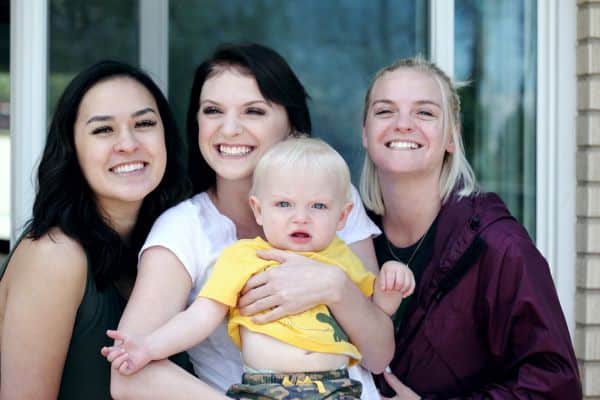If you see me on any social media channel, then it will come as no surprise that I have been real-time practicing the art of letting go that I preach about so much in my work coaching and counseling. So today, we’re going to talk about what to do when birds fly the nest.
I dropped my middle kid off at college last week and found myself smack inside a letting go challenge of epic proportions. This is not my first rodeo as they say, so I was thinking I would be better prepared to handle dorm drop off this time around. Thank goodness I didn’t make any bets about it because I’d be sad and broke!
Some of the differences for me of letting go of kid #1 and kid #2 can be explained by the kids themselves. They’re different in a few distinct ways that made the experiences of prepping for school unique for each of them. So, I shouldn’t have been surprised by how unprepared I actually was to send my middle one off to school.
And yet, here I was, a dysregulated mess of a human for a solid week before and after.
I always seek to know the Why that exists behind my behaviors. It almost always helps me to know as the why guides me into how to move through something instead of getting stuck in it. The problem this time is that all the obvious whys didn’t seem to explain the intensity of my feelings.
I knew letting go of my college freshman would be hard. I didn’t know it would threaten to overtake my nervous system by triggering old grief.
Yes, some of the art of letting go involves acknowledging the feelings of loss that can come from the passing of time. That is enough to bring on some heavy emotions, but the intensity that I was hit with this time felt like more. Probably because it was.
My second baby was born at the end of my mother’s fight with cancer. For the last 18 years this child and their grandmother have been inextricably linked in my heart. In some ways this natural life transition means I am being forced to let go of both of them at once, and say goodbye to my mother for a second time.
I don’t tell you this to elicit sympathy or atta girls. I am sharing my insight with you to illustrate the importance of two things:
- Tuning into ourselves to understand our reactions and
- Giving ourselves grace to move through transitions in ways that address the whole of our person.
This letting go experience didn’t feel the same as the last time I did it. I was not handling it the way the world thought I “should”. I also wasn’t handling it the way I thought I should. I was much more dysregulated than felt inline with the situation and that never feels like it is what “should” happen.
It is human nature it seems (maybe especially for moms) to jump to reprimanding ourselves for “not doing it right” when things like this happen. We shift from self-compassion or curiosity to judgment and anger and that usually only serves to make us feel worse then when we started. We get stuck instead of moving through.
I tried something different.
Letting go as your babies fly the nest will always require tending to your mama parts. In this case, by curiously examining my own reactions, I was able to identify that I also needed to tend to the grieving daughter part that was affected by this particular change. That part of me was demanding to be seen through the intensity of my emotions.
When our parts demand our attention through uncomfortable feelings, we often react by trying to push them away, ignore them or turn at them with anger. We may act out in ways that give life to the nervous system responses of fight, flight or freeze. If we ignore our parts long enough they’ll eventually turn to whatever means necessary to get our attention, whether that’s destructive outer behaviors or inner pain, the parts that want to be heard WILL do so.
Luckily, I’ve done enough work on myself to see/feel these parts in early intense emotions so I could act quickly before any real damage was done. Now, I’m challenging each of us to allow our parts to have their voice. Listen. Get curious about what they need to heal and move through and then give yourself the grace to give them what they need.
Maybe the parts simply need you to slow down and rest. Maybe your tending to parts means using grounding exercises, verbal processing, or what my former, not-so-educated self use used to call wallowing. In reality, this is simply a combination of slowing down and enough self-compassion to allow the sadness (or rage, or fear) in so it can move out instead of hovering around waiting for its turn.
It’s ok to feel. It’s ok when those feelings are BIG in response to changes, or losses or the natural progression of life that forces us to let go.
If those feelings get overwhelming, or if you’re trying to keep from feeling and the result is being stuck or numb, that’s when it helps to get curious about the why AND allow in whatever needs to come to give your parts the voice they need to heal.





